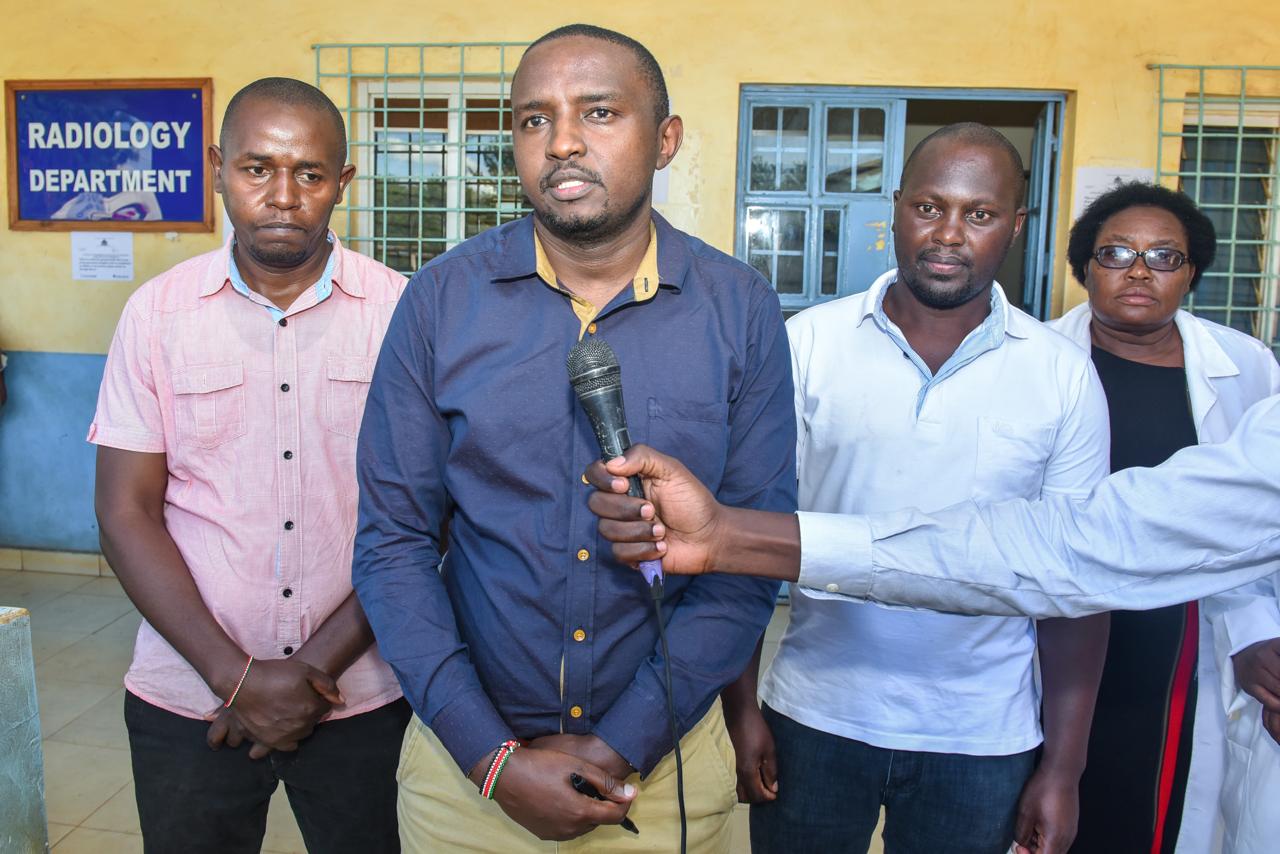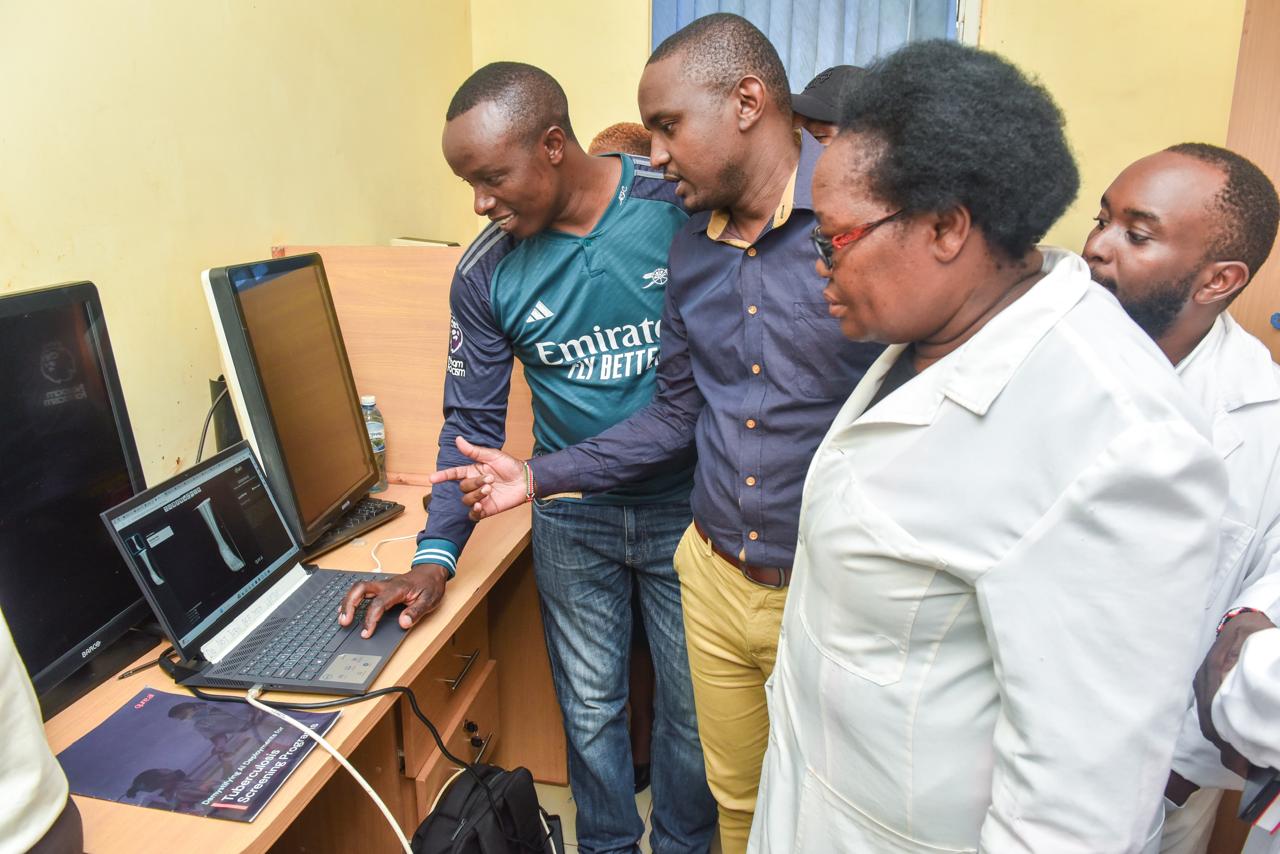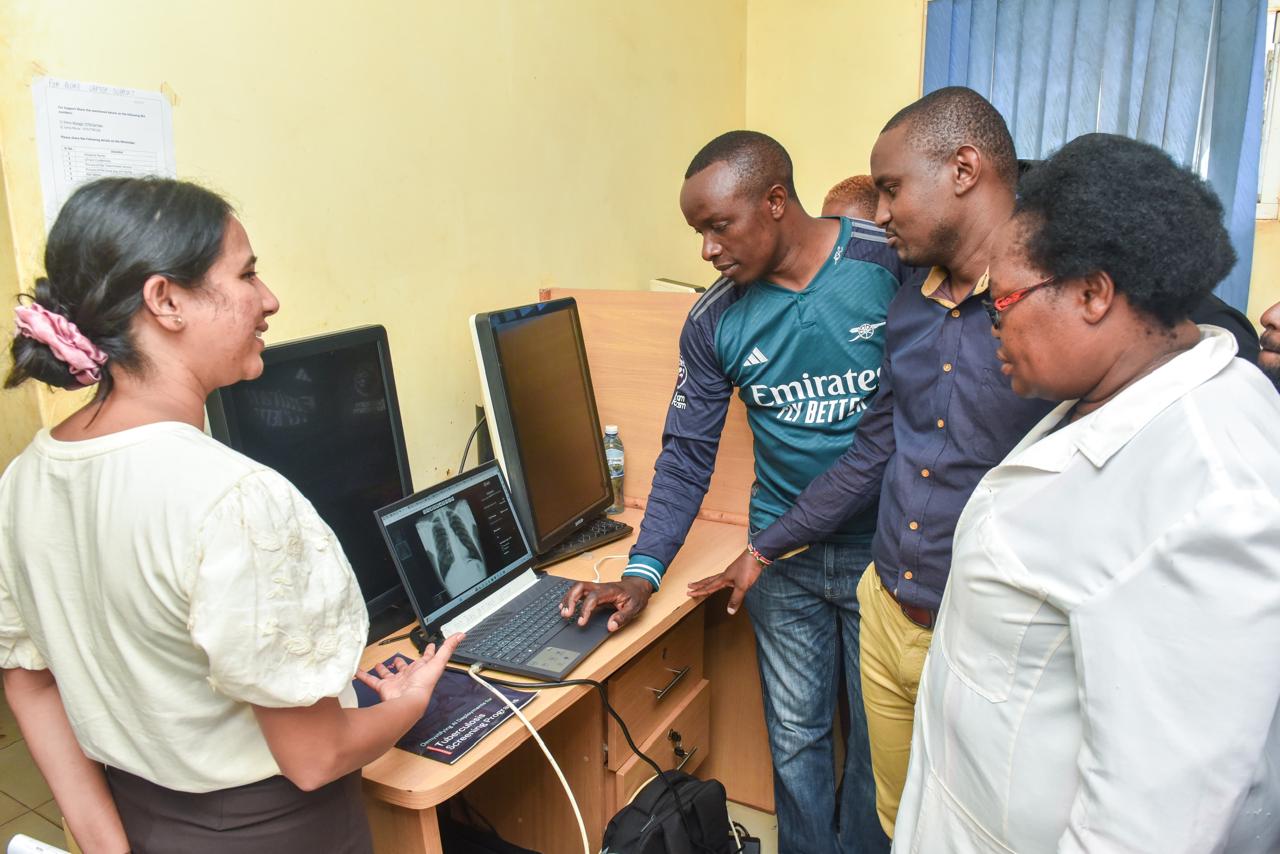Waiguru installs AI system at Kimbimbi hospital’s radiology department to enhance disease detection
Kirinyaga County Governor, Anne Waiguru, has installed the first Artificial Intelligence (AI) system to enhance disease diagnostic services in the county.
The system that has been installed at Kimbimbi Level Four Hospital’s radiography department, is integrated into the hospital’s X-ray equipment will also help in reducing the burden of detection of health conditions on healthcare professionals.
The AI program consists of two key components- one that will focuses on enhancing chest findings thus enabling the detection of conditions such as tuberculosis (TB), Chronic Obstructive Pulmonary Disease (COPD) and cancer and another one that is designed to identify musculoskeletal defects and fractures.
While supervising the installation of the system, the County Director of Health and Medical Services, Dr. Hesbon Gakuo, emphasized the transformative potential of the technology.
“The AI program will assist radiographers to detect TB more accurately and curb human error misdiagnosis. It will act as an assistive device, detecting abnormalities in the lungs, such as TB, COPD, and cancer. It also encompasses integration into the digital X-ray machines as well as training of staff on use of the software,” he explained.
He noted that the A.I. project has been implemented at Kimbimbi Hospital since most of the TB cases in the county come from Mwea which contributed to 40% of the cases in the county in 2023 thus making it a TB hotspot and a high-priority area.
Data shows that there were 1,520 TB cases diagnosed in the County in 2023, although it is estimated that the cases could have been as high as 1,800. Gakuo said that 75% of the 1,520 cases were men, as they were at a higher risk for infection due to their social nature. He noted that the software will help achieve more accurate results and diagnosis.
Governor Anne Waiguru has said that the system will revolutionize healthcare service delivery in the county, underscoring her administration’s commitment in leveraging cutting-edge technology in order to improve on diagnostic accuracy, enhance patient care and ultimately save lives.
She said County has made tremendous progress in enhancing health services through adoption of modern technology.
“AI has emerged as a valuable tool and is being use for disease detection and diagnosis, medical imaging and analysis among others. In our healthcare transformation journey, we are also adopting all valuable advances in digital healthcare technologies. Digitized healthcare presents numerous opportunities for reducing human errors, improving clinical outcomes and tracking data over time,” Waiguru said.
The Council of Governor’s (COG) Chair said the County has also rolled out the Hospital Management Information System (HMIS) to manage all medical facilities in the county. HMIS is crucial to population health management platform as it enables healthcare professionals to view a patient’s medical history no matter where they are located.
The AI project that is being implemented in partnership with the National TB Program, AMREF Health Africa among other partners, will also be implemented at Kerugoya County Level Five Hospital and thereafter to other health facilities in the county.
Timothy Kandie, an ICT Officer at the National TB Program, noted that the AI program will ease the load on the clinicians in diagnosing health abnormalities in patients so as to initiate timely treatment.
He noted that Kenya has not been left behind as the globe moves to use of AI which plays a key role in health matters. “With the high number of patients coming in, and with the few number of radiologists in the country, this program will be able to ease the traffic as radiologists will be able to read patients’ images remotely and treat patients accordingly,” Kandie stated.
He explained that AI technology is an end-to-end platform for TB screening, program and case management, capable of generating TB interface reports in less than 15 seconds. It can operate offline with cloud sync for low bandwidth settings and includes a dashboard to track key program metrics. The software is hardware-agnostic, supporting all major CR, DR, and ultraportable X-rays, and can upload analogue X-ray images. Additionally, it offers multilingual support on mobile and web platforms.
It has demonstrated remarkable efficiency, boasting a 50% cost savings on confirmatory tests, an 11% increase in additional TB cases detected, and a 90% reduction in X-ray reporting time. The WHO validated software is currently deployed in over 2,100 sites across 90+ countries.
AI enhances diagnostic accuracy, reducing the chances of human error. It enables faster diagnosis, allowing for timely treatment. The technology also supports remote diagnosis, which is crucial in regions with a shortage of radiologists. Moreover, AI systems can process and analyze vast amounts of data quickly, identifying patterns that might be missed by human eyes. This capability is particularly valuable in detecting diseases at early stages, improving patient outcomes.
Additionally, AI can lead to significant cost savings by reducing the need for unnecessary tests and procedures.







